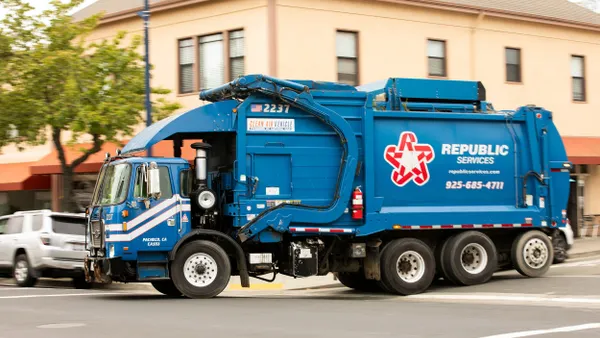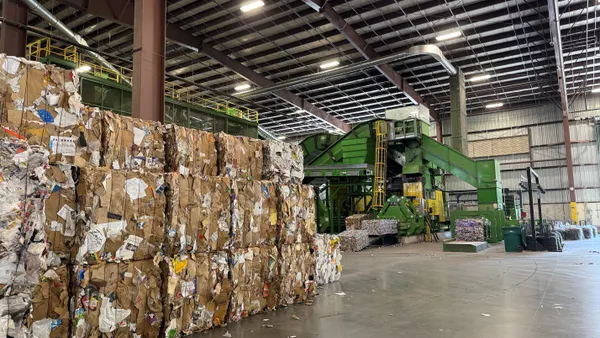Dive Brief:
- Toronto's Solid Waste Management Services division is ramping up its recycling bin inspection efforts after reporting a 26% contamination rate last year, as reported by Global News and others. Jim McKay, general manager of the division, said the city is spending about $100,000 on this inspection program.
- McKay estimates every percentage point of contamination can cost the city between $600,000 and $1 million. "If we get it down 10% or 15%, we'll save more than $10 million a year," McKay told City News. "We spend six figures to save seven."
- Residents were notified of this latest inspection round with a letter in November that outlined the issue and offered guidance for their recycling questions. Inspectors have only been giving warnings, but they may begin issuing $20 tickets, as reported by CP24.
Dive Insight:
Toronto launched this as a six-month pilot program over the summer and plans to continue the work based on initial progress. While it's too early to know official results, the city has reported early success with the approach. Some of the most common items within the 52,000 metric tons of contamination include food waste, dirty containers, textiles, VHS tapes, coffee cups and black plastics.
Toronto's curbside organics service and overall residential diversion rate of 52% make it one of the more advanced localities, compared to most North American cities. Yet this is the latest example of how no city recycling program is immune to contamination challenges. Other cities that are trying to address the problem include Chicago and Atlanta, but it wouldn't be hard to find similar stories from just about any large city in North America.
Some in the industry view this as an inevitable result of the single-stream push. Others, such as The Recycling Partnership, see it as a problem that can be solved with targeted education. Depending on the city, that may mean holding bins for collection, tagging them with messages, fining residents or trying to inform them door-to-door. As more municipalities look to tackle this issue, there is a growing amount of best practice research being shared by non-profits, state agencies and service providers.
Yet as the effects of China's scrap import policies begin to permeate more programs around the U.S., the urgency around contamination has increased. This is now viewed as one of the greatest threats to the short-term future of recycling programs and is a topic that cities are realizing they can no longer afford to ignore.











